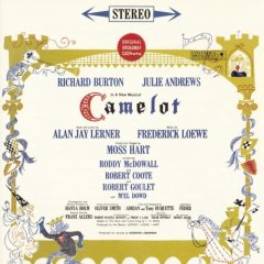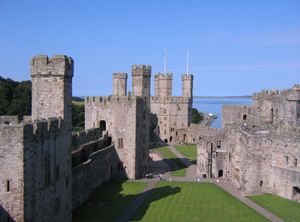An Archaeological Endeavour to Locate the Mythical City of Camelot
Randy Pinsky
McGill University, Montreal, Quebec, Canada
Anthropology
and Archaeology
Monday May 14, 2007.
This work is licensed
under the
Creative Commons
Attribution-Noncommercial-No Derivative Works 3.0 License.
To view a copy of this
license, visit http://creativecommons.org/licenses/by-nc-nd/3.0/
or send a letter to Creative Commons, 171 Second Street, Suite
300, San Francisco, California, 94105, USA.
For centuries, people have
been enthralled by the mystic and legendary Camelot of the time of the wise
King Arthur of England. While many have felt that simply believing in its
existence is sufficient, others desire tangible proof of this magical city. The
main reason for this is that in the modern life full of stress, commitments and
deadlines, many find inner peace in dreaming about a calm magical city where
even the impossible is within tangible grasp. Thus, in the 1960s the Camelot
Research Committee was created out of a team of like minded researchers in an
attempt to discover the city’s true location by examining archaeological data
from a variety of potential places. The contested possibilities are Cadbury
Hill (the site excavated by the CRC), Winchester and Caerleon, but all have
fairly convincing arguments to their claims. In an analysis of findings related
to the location of Camelot, a critical approach has been taken in order to note
flaws and inconsistencies in arguments that may discredit the author’s
arguments. It is by evaluating the data and arguments that one can truly
discover which locality is the most plausible candidate; that is, if this
mystic city existed in more than legendary imagination.
The History
Behind Camelot
The first record of Camelot being
mentioned was in Chrétien de Troyes’ poem, Lancelot,
the Knight of the Cart, which was written in the 1170s, six hundred years
after England was ruled by King Arthur according to legend. Camelot is only
briefly mentioned and is not described; “upon a certain…[d]ay King Arthur had
come from Caerleon, and had held a very magnificent court at Camelot’”
(Vv.31-32) (15). Interestingly, while Geoffrey of Monmouth wrote the Historia Regum Britanniae at around the same time, with a description
of the mythical historical legend of King Arthur, he never mentioned the word
Camelot. However, he claimed that Caerleon, Wales was an important location for
the king. This led many to surmise that this Caerleon must subsequently be the
mythical Camelot. Such premature assumptions and assertions are unscientific
and have little basis on undisputed facts, and thus should be treated with
caution. Despite this fact, many were convinced that the magical site was in
Wales, and it was only in the 13th century that Camelot superseded
Caerleon in importance. Even then, many of the descriptions of the latter
location by Monmouth, were simply transferred to Camelot (15).
Thomas Malory in the 15th
century is credited with depicting the Camelot most familiar to
English-speakers, in his book Le Morte
d’Arthur (The Death of Arthur). He
diverged from the earlier writers with his assertion that Camelot was in
Winchester, Hampshire. The last argued potential location emerged from John
Leland’s accounts in 1542 in his search for England’s Antiquities, where he
argued that the local people around Somerset believed “South Cadbyri” to be the
genuine Camelot (27, 29). Sources 19 and 29 entertainingly provide the supposed
original Old English version of this discovery, in its apparent original form.
Cadbury has prevailed to be the most commonly believed locality for Camelot,
and large scale archaeological digs in the 20th century were organized by the
Camelot Research Committee to attempt to verify this claim (1). These
excavations and their findings will be discussed below.
Local Uses of the Term ‘Camelot’
Camelot
was not solely the name of this magical capital; rather, it has also been
employed to symbolize a time of hope, a time of prosperity and success, as well
as a place of ideal qualities (14). It is for this reason that the John F.
Kennedy administration in the 1960’s was affectionately referred to as the
Camelot period (25). The president’s inspirational speeches and likeable
personality (and perhaps also his Irish ancestry) resulted in citizens making
parallels to the wise and kind King Arthur of the popular legend. In a haunting way, his assassination in 1963
was even depicted as the “fall of Arthur” (15). Camelot has also been used in a variety of filmed productions,
such as “Monty Python and the Holy Grail” which was later on adapted as Spamalot for public performances (15).
Moreover, Camelot has been dreamily viewed as a place where even the impossible
is a possibility. This is evident in The Camelot Schools and Californian
Camelot camps that respectively provide services designed to instill a sense of
pride and accomplishment for troubled youth and children with disabilities (33,
16).
The Camelot Musical
In the 1960’s, the famed musical team of Allan Jay
Lerner and Frederick Loewe produced the successful musical of Camelot, starring
well known (and emerging) stars, such as Julie Andrews, Richard Burton and Rock
Hudson (21, 15; see image 1). It was based on The Once and Future King by T.H. White, a literary version of the
legend (15); however, it is unfortunate that almost no web sites provided
information on why this book was chosen, how close it remained to the original
legend, and when it was written. The performances ran for a respectable 837
shows, premiering at The Majestic Theatre (21).
Image 1: Original production poster for the Camelot musical by Lerner and
Loewe, 1960.
Source: http://www.thebroadwaymusicals.com/c/camelot.htm
The play was extremely
influential in providing the public with an indelible image of what Camelot
must have looked like in its time of magical existence (see image 2). One
cynical viewer bemoaned how the musical bore little resemblance to the legend,
was over-dramatized, and “rip[ped] the middle of the story out” (23). While the
credibility of this anonymous critic is not provided, it does make the valuable
statement that one must not accept everything shown by the media as absolute
truth. In a similar vein, this very attitude must be employed in examining the
claims for the true location of Camelot. The arguments and so-called “evidence”
must be examined cautiously and critically.
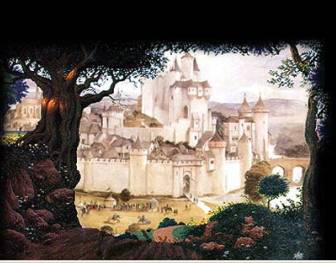
Image 2: The fabled Camelot
Source: http://www.occultopedia.com/c/camelot.htm
Possible Locations of Camelot
With this romantic image in mind of a beautiful and joyous
capital, many people naturally would like to discover if there is
archaeological evidence to prove the actual existence of Camelot. While there
have been many arguments on possible locations for Camelot; some more
convincing than others in terms of archaeological proof, the places most
commonly accepted to be Camelot in Great Britain are Cadbury Hill, Winchester
and Caerleon. Source 22 even made the claim that Cornwall was linked to Arthur,
in the amusing but farfetched claim that the legendary king’s profile can be
seen at the edge of the cliff face (see image 3)! People should be wary before
they place complete trust in claims that use (naturally formed) sides of cliffs
as their main sources of proof. While no further discussion is provided, this was
probably used to corroborate the belief that Arthur was associated with
Tintagel, in Cornwall, if they were unconvinced by the questionable “Arthur
Stone” to be discussed.
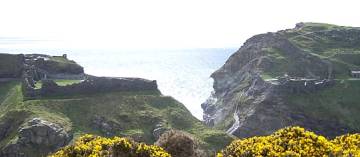
Image 3: King Arthur’s “profile” at Cornwall
Source: http://www.thisisnorthcornwall.co.uk/king_arthur.html
Courtesy of Kevin Edwards of www.thisisnorthcornwall.com
Cadbury Hill
While many
believers unofficially were convinced that Camelot was located in Cadbury Hill,
archaeologists only became convinced of this being a true possibility with physical
evidence, when amateur female archaeologist Mary Harfield retrieved some local
potsherds in this location that were dated to the 6th century; the
time of King Arthur (9, 28). Harfield (who often goes unnamed and uncredited in
many websites, (28, 17, 18, 29)) made this discovery in the 1950’s. Dr Ralegh
Radford examined these findings and discovered that they were similar to the
ones he had uncovered at the Tintagel Castle that many conclusively associate
with King Arthur. He thus became convinced that someone of equal standing and
antiquity had lived in this area as well, who was also to import the exotic
luxury goods once contained in these pots (7).
The interest grew and
developed into the creation of the Camelot Research Committee under the direction
of archaeologist Leslie Alcock and colleagues Dr Ralegh Radford and Geoffrey
Ashe. Sypeck claims that the creation of the committee, “gave legends new
credibility in the minds of the British public” (31) since well known
archaeologists were engaging in the excavations. However, this does not
necessarily mean that the general archaeological community necessarily had
approved or believed in the mission of this small group, so this fact in itself
must also be accepted cautiously.
Radford had excavated at
Tintagel in the 1930’s as mentioned, a site that was believed to be associated
with King Arthur due to the notorious and questionable “Arthur’s Stone”
discovered there (34; see image 4). This slab of rock indeed seemed to clearly
have the name “Arthur” inscribed on its face, however, even if this indeed was
the correct name carved, this does not provide for a necessary conclusion that
it was this one King Arthur to which it was referring. The findings and
conclusions made by the “discoverers of Camelot” must be viewed with this same
level of caution.
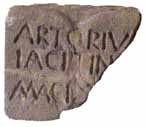

Image 4: The fabled “Arthur Stone” found at Tintagel Castle and identified
with King Arthur.
Source: http://www.earlybritishkingdoms.com/archaeology/atherstone.html
The Camelot Research Committee
uncovered many fascinating findings in their excavations during the 1960s and 70s.
Dr. Radford’s experiences of engaging with a similar style of imported pottery
from the Mediterranean that dated to 500 AD at Tintagel led him to engage in
the excavations with the conviction that the famed king had visited both
locations at the similar time period (29). The jars were believed to have
carried foreign oil and wine, an importation that could only have been possible
under a rich and powerful monarch (28). One must be very careful not to form
quick and seemingly simple conclusions about these apparent links, as there
could be other possible explanations (27). For instance, it is extremely
conceivable that there could have been another similarly wealthy lord who also
imported pottery and goods of this type. Such an act was neither uncommon nor
unique and thus it is premature to attribute it solely to King Arthur without
other substantive proof. While admitting this fact, the committee still hoped
that other findings that could undoubtedly be attributed to the legendary king
would be unearthed to allow for the desired link to be conclusively made.
However, many archaeologists
believe the committee simply discovered the remains of a wealthy lord whose
identity could not be conclusively made. They are not convinced that the
committee did indeed find undebateable proof to be able to truly claim that
Cadbury Hill was indeed the resident city of King Arthur, the famed Camelot. In
fact, Ford claimed that modern archaeologists have recently re-evaluated and
discredited some of Radford’s conclusions of his various Arthurian excavations
(17, 18).
While
archaeologists have been unsatisfied that the committee had irrefutably proven
the whereabouts of Camelot, the Camelot
Research Committee’s findings do have much archaeological value as its
excavators did quality work in the digs.
While Cadbury Hill does not have a castle (6) (and yet is persistently
called Cadbury Castle in most of the sources) (6, 7, 17, 18, 29), it is unique
and without parallel to anywhere else in post-Roman occupied Britain, in its
degree of fortification (2, 29 see images 5 to 7).
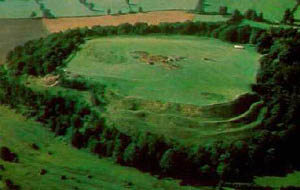

Image 5: The heavily fortified
Cadbury Hill
Source : http://www.missgien.net/arthurian/camelot.html
Cadbury Hill boasts a strategic
stronghold unmatched anywhere else in the area (3, 6; see images 6 and 7).
There is evidence of strong gates from post holes and there are the remains of
a refortification of the area by a powerful surrounding mortar-free wall in the
late 5th to 6th centuries (7, 27, 26). Sypeck confidently
explained the reason for the lack of a castle by stating that it was because
the area “predate[d] the age of the brick-and-mortar things we think of as
‘castles” (31). His overly self-assurance is problematic as it is not
substantiated with any research backing. The web site 18 provides a valuable
reconstruction of how the fortifications might have looked in their original
state in the 6th century, on the basis of these archaeological
claims (see image 7).
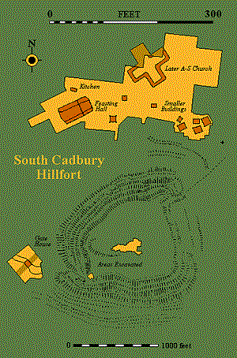

Image 6: The findings at Cadbury Hill, excavation site of the Camelot
Research Committee.
Source: http://www.earlybritishkingdoms.com/archaeology/cadbury.html
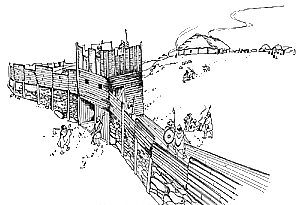

Image 7: Evidence of the heavily fortified Cadbury Hill, as envisioned by
an artist.
Source: http://www.earlybritishkingdoms.com/archaeology/cadbury.html
Sources 29 and 9 depict an
impressive looking map that documented the finds of the Camelot Research
Committee excavations. While the author probably felt that this image increased
credibility for his views, it rather had the opposite effect, as upon closer
inspection, it becomes apparent that the image is unclear, and the
interpretations and its message vague and thus problematic (see image 8). The
image thus defeats the purpose of trying to portray the findings as being more
authentic and thus valid. Instead, the map throws problematic suspicion as to
why the state of the image was this way.
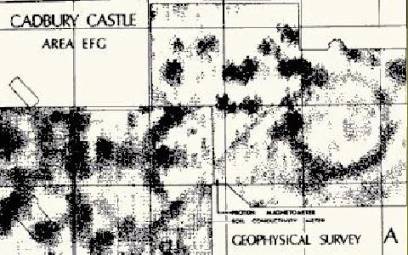
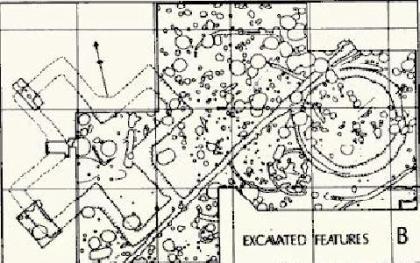
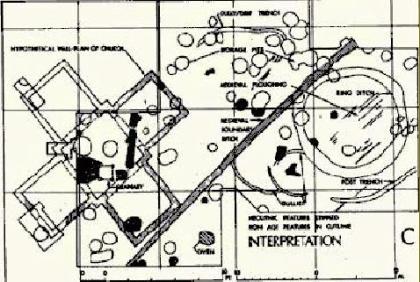
Image 8: Depiction of the
findings from the excavations at Cadbury
Source: http://www.celtic-twilight.com/camelot/infopedia/s/south_cadbury.htm
The excavators claimed that
the vast fortifications mentioned above had surrounded a castle that resided
within its protection. However, it is surprising that none of the sites’
authors attempted to provide any explanation for this lack of a building that
clearly would have been important for a king. Suspicion thus arises that it is
possible that this deficiency was carefully omitted from their analysis as it
would be viewed as ‘unnecessarily’ weakening their argument that this was
indeed the location of Camelot.
The extreme fortifications and
security could only have been coordinated by a powerful individual who had the
means to employ the required workforce necessary for its construction (17, 18).
The fortified walls’ unyielding protection directly coordinates with Arthur’s
long term campaign to keep the invading Saxons from attacking his land (6),
thus there is valuable congruence between the archaeological findings and
historical belief. Therefore, while it is not yet possible to declare
conclusively that King Arthur was the force behind such imports and
fortifications, it is clear that Cadbury had been occupied by the right kind of
person; a “powerful [and rich] British warrior chieftain”, at approximately the
correct time (12, 27, 7,4). This is a powerful if only preliminary assertion,
and the excavators admitted that while the individual could have been anyone of
these qualities, it was their hope that they would discover findings that would
indisputably prove him to be King Arthur. Of all these sources, only source 4
has a complete list of sources that substantiated the author’s arguments.
As a result of the above
discussions, Cadbury Hill is the contestant that is most often accepted as
being Camelot. An author writing at the time of the excavations in Time
Magazine wistfully stated that in order to successfully clinch the link, one
would have to find an artifact that undisputedly had Arthur’s name inscribed.
This very publication is unique in its date being contemporaneous with the
excavations themselves, because the CRC members never directly published their
findings online. The author of “Quest for Camelot” mentioned that one of the
diggers claimed to have found a “carved letter ‘A’” (28). No further details
were provided as to this artifact, and as it was not mentioned in any other
source, it can be promptly disregarded. One must be extremely skeptical of such
claims which often have little validity to them, due to there being no further
proof of them and a deficiency of similar minded authors who substantiate the
claim. As will be shown, similar findings with claimed links to Camelot and
King Arthur have been found, whose validity must be carefully evaluated.
Leslie Alcock, one of the
prominent members of the original Camelot excavating team, wrote a fascinating
collection of books on the findings of the Camelot Research Committee, with
intriguing titles such as “Was this Camelot? Excavations at Cadbury Castle,
1966-1970”. He also wrote about “Arthur’s Britain: History and Archaeology, AD
367-634” and the engaging “Cadbury-Camelot: a Fifteen-Year Perspective” (24).
Alcock’s colleague, Geoffrey Ashe was also convinced that Camelot was at
Cadbury, and this was shown in his successfully convincing the producers of the
Camelot movie to place the capital at Cadbury, Somerset on the map shown at the
start of the film (2).
Winchester and the Round Table
Winchester in Hampshire has also been proposed as
being another possible location of Camelot, due to the powerful fact that the city
boasts the “original” Round Table from King Arthur’s time (see image 9). Thomas
Malory, who was the 15th century author of Le Morte D’Arthur, the
novel that popularized the common perception and location of Camelot,
was completely convinced by this argument (15, 17, and 18). While some sites’
authors simply accept this proposal, others critically delve into the
intricacies behind the matter. For example, Ford confidently argues that “the
identity of Winchester as Camelot… is…proofed… by the vast Round Table… hung
[there]” (17, 18). However, he then promptly contradicts himself by stating
that Malory’s “equations of legendary places with more modern sites, are…
highly dubious and easily disproved” (17, 18).
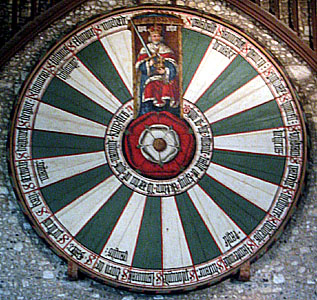

Image 9: The “original” Round Table in Winchester, Hampshire.
Source: http://www.earlybritishkingdoms.com/archaeology.html
While it does seem to appear that
this is the genuine table as it bears the names of the knights around the
perimeter in Merlin’s magical gold ink as is stated in the legend, there are
some questionable aspects about it. Radio carbon dating has conclusively dated
the table as having been built in the 13th century, rather than the
6th century of Arthur’s time. This dating alone dispels the belief
that it could have been the original Round Table, as it is undeniably
post-Arthurian time. Several sources
maintained that King Edward l of this time period was the impetus behind the
creation of the table, in a desire to more closely associate himself to the
admired King Arthur, and thus gain more credibility for his wielding of power
in a political propaganda scheme of conquering (2).
It is argued that that the
king ordered for the creation of a convincing replica of the Round Table in
order to gain credibility for his ruling over all of England, as he felt this
would aid in Wales and Scotland more easily surrendering to his rule. He reasoned
that the most successful way to achieve status as the rightful ruler would be
to create links between himself and the fabled King Arthur. He cleverly
rationalized that such an assertion would aid him in authenticating his “claim
to the sovereignty of the whole kingdom of Britain” as Arthur had attempted to
do as “’the one, true, King of the Britons’” (1). In fact, the king claimed to be finally completing this
unfulfilled endeavor (1). The author of source 1 cleverly coined the term
“Medieval Spin Doctors” to refer to the individuals who were directly engaged
in attempting to forge (or force) a link between the two kings despite a six
century gap separating them. This was all part of the propaganda approach of
transforming “[f]iction into [f]act for political purposes”. The Arthurian
legend was also useful in it conveniently providing King Edward l and later
rulers with proof of their ancient “lineage”, which would serve as valuable
justification for their reign (1).
Thus, the king had a
convincing Round Table made according to legendary descriptions and had it
displayed in the Great Hall of Winchester Castle (1, 17, 18). It is interesting how this renowned table
was mentioned for the first time only a century earlier than its physical date.
The Norman poet, Wace was the author of “Roman de Brut” where the table is
first mentioned. Some claim that this poem was based on a translation of many
of the ideas in Monmouth’s Historia Regum
Britanniae, into French poetic verse (1). This author was credited with
“embellish[ing]” the Arthurian story and inventing the legend of the Round
Table in 1155. The fact that someone had invented
the story surrounding the Round Table and the people and events associated with
it, provides for the unsettling idea that perhaps the whole Arthurian legend
was also of this status; merely a piece of written prose based on imaginative
fiction rather than historical fact . This idea must be taken into serious
consideration upon examining the ‘archaeological’ findings claimed to be associated
with King Arthur.
Despite this fact, source 35
persists in trying to prove the Winchester table’s authenticity; however the
author’s approach is weak and unconvincing. He argues that there was an
inscription on the table that provided conclusive proof as to its valid
identity as the original Round Table. This belief is maintained despite the
substantial proof that the table could not have conceivably originated from
King Arthur’s time, due to the blatant dating evidence. Nevertheless, the author
is convinced by the (obviously falsified) inscription that “thys is the rouwnde
table of Kyng Arthur… [and] hys namede knygttes”. Whether this message was
coined by the website author or by King Edward l himself in the hopes of more
firmly convincing his subjects of his legendary heritage, is not clear.
However, either way it provides cause to suspect other similar assertions of
possibly containing equally fallacious and fabricated content. Thus,
conclusions must be undertaken cautiously, and each form of evidence carefully
assessed.
Sources 30 and 35 made the
interesting but far-fetched link between Stonehenge and the Round Table. Not
only was it believed that Merlin was involved in the Arthurian legend, but
there is also the popular conception that the famed wizard had been
instrumental in the formation of the imposing circle of huge stones. From this
fact, the author construes a connection between the structure and the legend
that he believes to be convincing. This theory must be examined for his reasoning.
The circular form and common
participating actor is the only real connection that can be gleaned from the
bizarre and eccentric website that has startling images with insufficient
explanations. Indeed, the various ‘astronomy’ images, boast an unexplained and
confusing mix of zodiac signs, Egyptian god names and words such as “Camelot”,
“King”, “Queen” and “Excalibur” that are presumably associated with the legend
of King Arthur and are randomly
interspersed together (see image 10 and 11). Source 31 claimed that the
Milky Way could encircle Stonehenge “like a table in the sky”, in order to make
the forced connection clear. Additionally, the author claims that the thirty
pillars of Stonehenge echo the places for the thirty knights at the Round
Table. This last point is problematic as there is no conclusive consensus as to
the number of knights at Camelot. As can be seen in image 9, there are only 24
places in the Winchester Round Table, the number of placements presumably being
based on the legendary account (1, 17, 18). However, source 25 claims that the
number varied according to different historical documents that ranged from a
total of 12 knights, to others that argued for 150 places at the table. Since
the facts that the author is basing his argument on are not universally
accepted nor agreed upon, even further skepticism on his unusual theory.
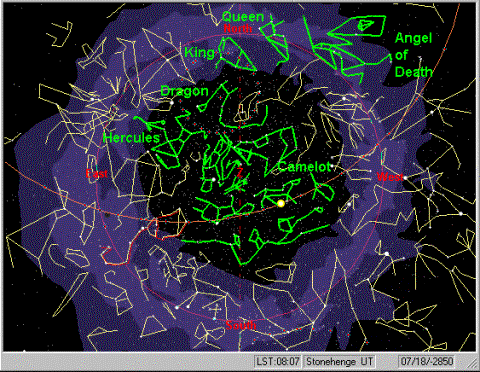
Image 10: The ‘link’ between the circular structure of Stonehenge and
Camelot.
Source: http://www.siloam.net/camelot/index.html
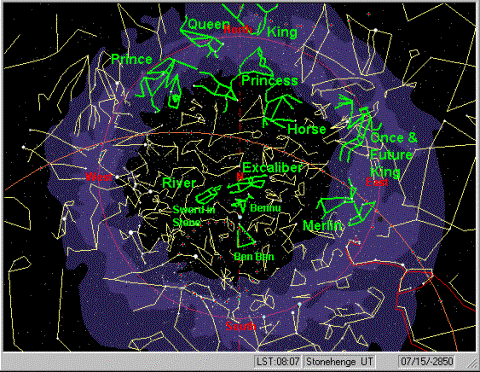
Image 11: Astronomical references to aspects of the King Arthur and Camelot
legend.
Source: http://www.siloam.net/camelot/index.html
In addition to having a (or
‘the’ depending on the source) Round Table in his castle, King Edward l took
one step further in attempting to secure his credibility to the throne and the
connection with King Arthur. In 1283, he had a castle built in Caernarvon, an
ancient Welsh town Northeast of Winchester. This was a key location for his
medieval castles, and the local people believed it had a direct link to Merlin,
who was deeply involved in the Arthurian legend. Thus, the building of the
castle was undertaken with the precise motive of further clinching the link
between King Edward l and King Arthur. Citizens were convinced that this was
the true fabled city as it had sparkling colored walls from different
materials, just as was stated in the legendary poems and Welsh mythology (see
image 12). This was naturally so as the architect was believed to have used the
legends as a building guide for the Caernarvon Castle! (1) Even though the
king’s political propaganda and activities have been exposed, it is still an
attractive tourist site for people who are excited to view the perceived as
“genuine” Round Table. It is interesting but perplexing why Malory, who wrote in
the same period as this conspiracy, still maintained his beliefs that this was
the true Camelot despite the above discoveries. The secret plot must have been
well kept within the community of the “Medieval Spin Doctors” who aimed to
convince people that the Winchester Round Table and castle provided substantial
proof for locating Camelot at Winchester.
Image 12 Caernarvon Castle in North Wales, created during the reign of King
Edward l.
Source: http://en.wikipedia.org/wiki/Caernarfon_Castle
Caerleon
Caerleon was the last
proposed location for Camelot due to its mention in the writings of 12th
century authors Chrétien de Troyes and Geoffrey Monmouth who claimed it to be
so. These were authors who had provided the main substantial documentation
about the Arthurian legend (17, 18). However, even this mentioning is not
convincing as it was noted that Monmouth had based his Historia Regum Britanniae on an old book was never named and that
has never resurfaced (4). The ignorance as to the identity of the book or its
content throws suspicion on Monmouth’s own assertions. This is merely worsened
by the fact that he was criticized as having loved lying and embellishing the
truth, facts which serve to further undermine the validity of his claims (2,
4).
Interestingly, Geoffrey Ashe,
one of the members of the Camelot Research Committee, stated in an interview
that “however wildly [Monmouth] exaggerate[d] and fanaticize[d]… [there was] a
factual basis for at least some of his account” (2, 4). Ashe’s proof behind
this claim was the “Arthur Stone” that was mentioned, that had been found at
Tintagel. This had been one of Dr Ralegh Radford’s pieces of evidence that the
imported Mediterranean pottery described, was not merely brought in by an
unidentified rich lord. Rather, he felt that the fact that similar pottery had
been found both in Cadbury and Tintagel, and the fact that the stone ‘clearly’
stated ‘Arthur’ served to provide conclusive linking proof between the two
locations, and thus ‘proving’ the site of Camelot. While it is debateable about
whether “Arthur’ is indeed inscribed on the stone, and if it does so, whether
it, is referring to this one King Arthur (a point that many sources are
unconvinced of (2,17,18)) the point is that Geoffrey of Monmouth had been
correct in his having identified Tintagel as being a place associate with
Arthur. Thus, Ashe is convinced that Monmouth’s other arguments should be
similarly believed due to this fact.
Despite authors who are
skeptical of such claims, Ashe remains firm in his belief and stated that once
conclusive evidence would be found to prove the existence of King Arthur and
Camelot, “it would be a triumph for people who believe in taking legends
seriously and a setback for historians who try to reduce everything to
documentation” (2). Ford admits that historians have been proven wrong before
by authors such as Geoffrey of Monmouth, in different contexts. He argues that
Monmouth was the sole source to describe the existence of a King Tenvantius of
Britain; a ruler that no historian believed had existed. The scoffing
historians were proven wrong when modern archaeologists unearthed Iron Age
coins bearing the name “Tasciovantus”.
While Ford must be commended
on his attempting to give more credibility to the British author who had
popularized the legend, even this argument is weak. The reason is that the
names are not similar, and it is not mentioned when Monmouth claimed the king
to have existed, in order to see if the dates corroborated one another. Thus,
this argument remains unconvincing and does not serve to prove that if Geoffrey
of Monmouth had proven right before, he must be again for Camelot.
These cautions provide a
critical backdrop to critically evaluating the arguments that claim that
Caerleon was the true site of Camelot. Ford described how the place was often
called “Arthur’s Table” due to it boasting a “huge grass-covered raised oval
hollow around which King Arthur and his knights often sat” (17, 18, 20 see
image 13). There is no substantiating of this fact, and Ford’s argument is
further weakened when the carelessly chosen quoted section of Geoffrey of
Monmouth that supposedly was intended to prove his point, does not mention
Caerleon, nor make any reference to a grassy table. He simply relies on an
unrevealing photo to express his ideas. Interestingly, if one is to rely on
visual meaning alone, image 5 of Cadbury Hill can be argued to be a better
candidate for a natural table than Caerleon. Ford’s idea is further weakened
when a source noted that the 1926 excavations of the so-called “Round Table”,
discovered, not the remains of an English monarch, but rather the remnants of
an ancient Roman amphitheatre (18). Thus, his argument lacks substance. Despite
these and other faults, Ford provides an interesting appraisal of the various
possible locations of Camelot, and even has published a short booklet, entitled
“Where to Find Arthur”. This booklet should be read critically and with a
skeptical eye, with the identified flaws in mind.
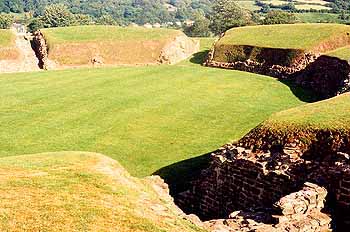

Image 13: The “Round Table” of Caerleon,
possible location of Camelot.
Source: http://www.earlybritishkingdoms.com/archaeology/caerleon.html
While the location of Camelot
has not been unquestionably accepted by all, there are various arguments for a variety
of possible sites. Advocates for each one have made reference to historical,
archaeological and legendary evidence to make their case more convincing, to
varying degrees of success. Thus, while archaeologists can not conclusively
state whether Camelot is in Cadbury, Winchester or Caerleon (or none of the
above), it is a fascinating exercise to evaluate various claims in order to
measure their potential and to one day possibly find this mystical and magical
city.
References
- Arthurian Legend. Retrieved on
March 5, 2007 from http://www.castles.me.uk/arthurian-legend.htm
- Ashe, Geoffrey. Retrieved from http://www.britannia.com/history/glaston1.html
- Biehl, Michelle L.
1991. Arthurian
Archaeology. Retrieved on
March 5, 2007 from http://www.jammed.com/~mlb/arthur.html
- Bovaird, Kristin. Kristin
Bovaird -- King Arthur. Retrieved on March 6, 2007 from http://people.ku.edu/~kbovaird/arthur1.htm
- Britannia: Conversation with Geoffrey Ashe. 1999. Retrieved March 6, 2007 from http://www.britannia.com/history/h17a.html
- Cadbury. Retrieved March 6, 2007 from http://www.witchesway.net/links/lost/lost6.html
- Cadbury Castle: An Important Arthurian Site. Retrieved on March 7, 2007 from http://www.britannia.com/history/arthur/cadcast.html
- Camelot. Retrieved on
March 12, 2007 from http://www.occultopedia.com/c/camelot.htm
- Camelot. Retrieved on March 5, 2007 from http://www.missgien.net/index.html
- Camelot. Retrieved on March
12, 2007 from http://ec2.images-amazon.com/images/P/B000007OHW.01._SS500_SCLZZZZZZZ_.jpg
- Camelot: the
Musical and Camelot Lyrics. Retrieved on
March 12, 2007 from http://www.thebroadwaymusicals.com/c/camelot.htm
- Camelot the
Legend. Camelot Village: Britain’s Heritage and History. Retrieved on March
5, 2007 from http://www.camelotintl.com/legend/index.html
- Camelot Musical: Retrieved March
12, 2007 from http://www.thebroadwaymusicals.com/c/camelot.htm
- CAMELOT: TEXTS,
IMAGES, BASIC INFORMATION. Retrieved on March 12, 2007 from http://www.lib.rochester.edu/camelot/cammenu.htm
- Camelot -
Wikipedia, the free encyclopedia. Retrieved on March 5,
2007 from http://en.wikipedia.org/wiki/Camelot
- CAMP CAMELOT:
Strives to open minds, hearts, and bodies of people with unique needs for
better quality of life. Retrieved on March 12, 2007 from http://www.campcamelot.net/
- Ford, David Nash. 2000. Britannia King Arthur.
Retrieved on March 12, 2007 from http://www.britannia.com/history/arthur/camelot.html
- Ford, David Nash. 2001. Early British
Kingdoms. Retrieved on March 5, 2007 from http://www.earlybritishkingdoms.com/archaeology/caerleon.html
- Green, Thomas. 2006. A Guide to Arthurian
Archaeology. Retrieved on March 7, 2007 from http://www.arthuriana.co.uk/n&Q/artharch.htm
- History, Legend and Everything in between. Retrieved from http://www.kingarthursknights.com/structures/default.asp
- Julie Andrews
Broadway. Retrieved on March 12, 2007 from http://julieandrews.co.uk/braod_camelot_main.htm
- King Arthur of Camelot. 2006. Retrieved on March 12, 2007 from http://www.thisisnorthcornwall.co.uk/king_Arthur.html
- Lerner &
Loewe's Camelot. Retrieved on March 12, 2007 from http://www.celtic-twilight.com/camelot/infopedia/c/camelot_musical.htm
- Leslie Alcock Books
- Signed, used, new, out-of-print. 2007. Retrieved on
March 7, 2007 from http://www.alibris.com/search/search.cfm?waut+Leslie%20Alcock
- Lupack, Alan. Frequently Asked Questions about
the Legend of King Arthur. Retrieved on March 12, 2007 from http://www.lib.rochester.edu/camelot/FAQ-Arthur.htm
- Mystical-WW - Mystical Places - Arthurian. Retrieved on March 7, 2007 from http://www.myhstical-www.co.uk/mysticalplaces/ap.htm
- Professor
Leslie Alcock. Retrieved on March 5, 2007 from http://www.telegraph.co.uk/core/Content/displayPrintable.jhtml;jsessionis= GCZGYLMKY…
- Quest for Camelot
-- TIME. Retrieved on March 5, 2007 from http://www.time.com/time/magazine/article/0,9171,842622,00.html
- South Cadbury Castle. Retrieved March 12, 2007 from http://www.celtic-twilight.com/camelot/camelot/s/south_cadbury.htm
- Stonehenge, the beginning of Camelot. 1999. Retrieved on March 5, 2007 from http://www.siloam.net/camelot/index.html
- Sypeck, Jeff. 1999. The Road to Camelot. Retrieved on March 5, 2007 from http://www.washintonpost.com/ac2/wp-dyn/A473580-1999Dec12?language=printer
- The Camelot
Schools - Home. 2006. Retrieved on March 12, 2007 from http://thecamelotschools.com/
- Theories on
Camelot and Glastonbury - alt.archaeology: Google Groups. 1998. Retrieved March
6, 2007 from
http://groups.google.ca/group/alt.archaeology/browse_thread/thread/a71251fff497eecd/468f…
- Vermaat, Robert M. 2007. A new interpretation
of the Artognou stone, Tintagel. Retrieved on March 7, 2007 from http://www.geocities.com/vortigernstudies/articles/arthurstone.htm
- Wild, Michael. 2005. Alternative King Arthur. Retrieved on March 12, 2007 from http://www.geocities. com/dagonet_uk/index.htm
